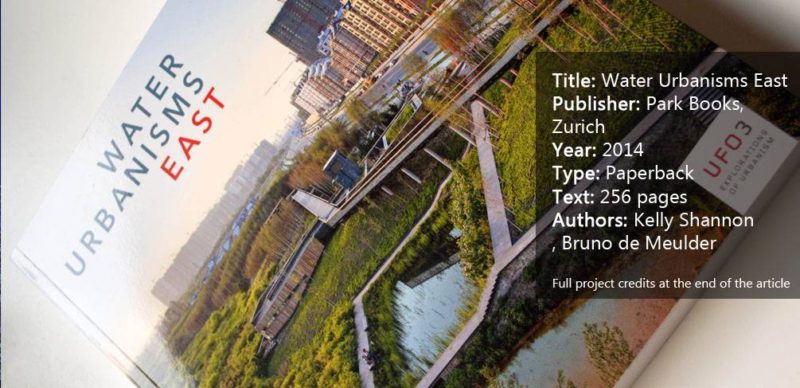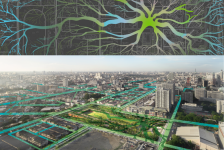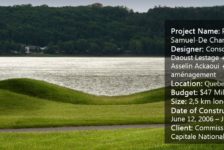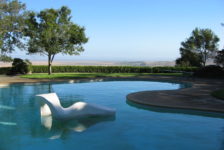Book review by Yuliya Georgieva A book review of Water Urbanisms East by Kelly Shannon and Bruno de Meulder. In this era of the internet and instant sharing of information, reading books might sometimes seem old-fashioned. Some think that by the time books are written, edited, published, and distributed to the readership, they are already old. Yes, books get old, but they represent compilations of carefully selected, and in the case of landscape architecture, specialized information brought to us by experts that would take us ages to compile alone. Such is the case with Water Urbanisms East. This book represents a terrific compilation of diverse scale case studies on water-based practices in Asia, studying cities and landscapes from the past to today.
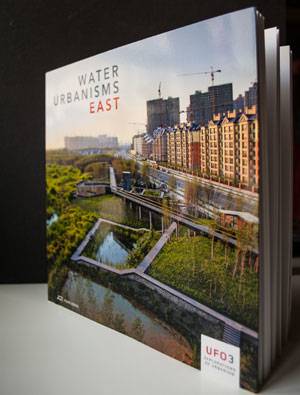
Front cover of Water Urbanisms East. Photo credit: Yuliya Georgieva
It revisits the practices of urban and landscape planning through the lenses of the effects of urbanization and climate change on the water regimes of rivers and cities, examining its consequences such as droughts and floods in the particularity of each case. By doing so, it doesn’t seek for a best practice to recommend but rather highlights the necessity of understanding local water regimes, topography, climate, and the environment in order to find better ways to design, integrating engineering with environmental approaches.
Whom is Water Urbanisms East For?
Whether you are a very experienced professional or just starting out in the field, this book will bring a completely new perspective on the interplay of landscapes, water, and cities. Water Urbanisms East is for anyone looking to re-discover, from a critical point of view, landscape and urbanism experiences through the spectrum of water as a structuring element, as well as for those just looking for ideas and inspiration from a foreign context.
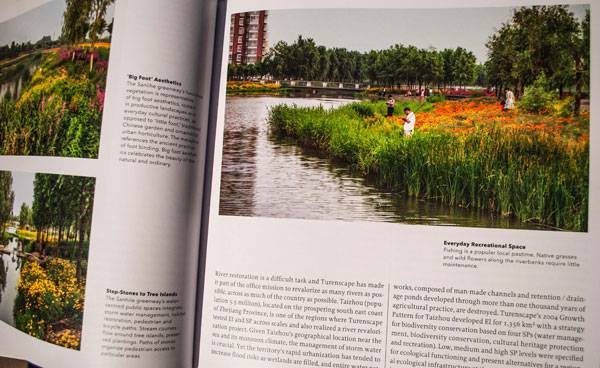
Inside Water Urbanisms East. Photo credit: Yuliya Georgieva
The book is part of the UFO Explorations of Urbanism series from Park Books Zurich and was co-edited by
Kelly Shannon and
Bruno de Meulder. They are authors or co-authors of a significant part of the text but what is great about this book is that it’s a collection of contributions from many experts on the cases presented. The editors are also authors or co-authors of a number of texts about projects in Vietnam, as they worked together on the master plans of Can Tho and Ca Mao in the south of Vietnam.
Organized into three parts; “
Contemporary Positions”, “
Practices Revisited”, and “
Explorations and Speculations”. The book’s structure leaves you free to choose where to start reading. Each part consists of a variety of cases, each with its specific theme on the role of water so you can dive into exploring the perspectives of the different authors in any order you prefer.
Pick up your copy of HERE! 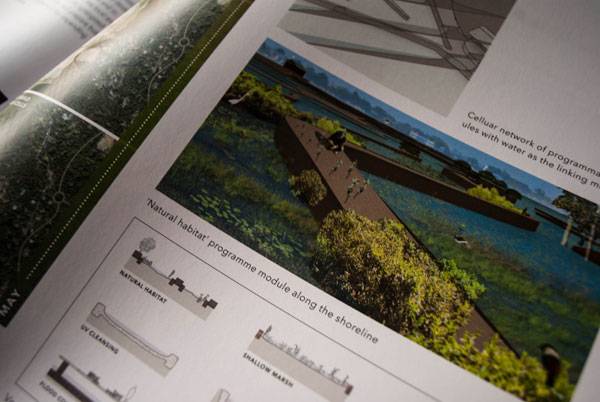
Inside Water Urbanisms East. Photo credit: Yuliya Georgieva
starts with an exploration across scales of China, Thailand, Indonesia, and a vivid contrast between practices in North and South Vietnam. Each of these contributions carefully explores the impact of urbanization on water management – and more precisely, the destructive impact of engineering-centered approaches to dealing with water management on the environment.
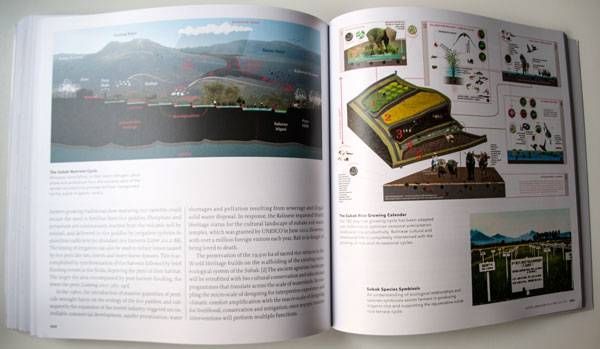
Inside Water Urbanisms East. Photo credit: Yuliya Georgieva
They bring up the issues of polluted water courses, destroyed biodiversity, and compromised quality of environments and natural landscapes due to industrialization. What makes this chapter special, though, is that along with the terrible consequences of industrialization, carefully selected non-typical examples are included to portray the need for rethinking the urbanism we implement.
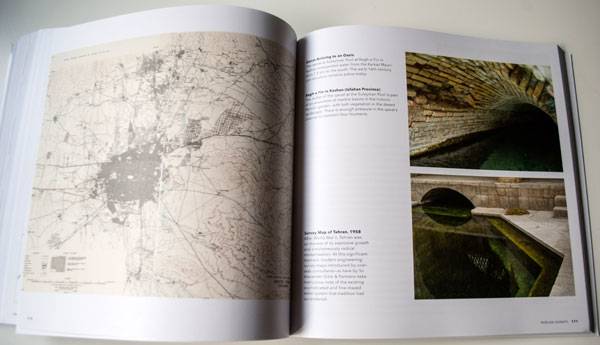
Inside Water Urbanisms East. Photo credit: Yuliya Georgieva
The example of the recovery of watercourses such as the Sanhile River by Turenscape brings hope that the battle isn’t lost. That project didn’t just recover the natural landscape and biodiversity of the river by destroying the concrete channel but is now part of an integrated water management system which also serves to mitigate floods.
“Practices Revisited” is my favorite chapter – it not only explains the role of water in the landscape from its scarcity or its abundance but also how those circumstances created the need for better water management and how whole cultures were based on those water practices. A terrific example of water management and sustainable biodiversity maintenance and protection is described in the case of Subak in Bali, Indonesia, where contemporary optimization of rice production is based on a careful water management model developed in the past.
Pick up your copy HERE! 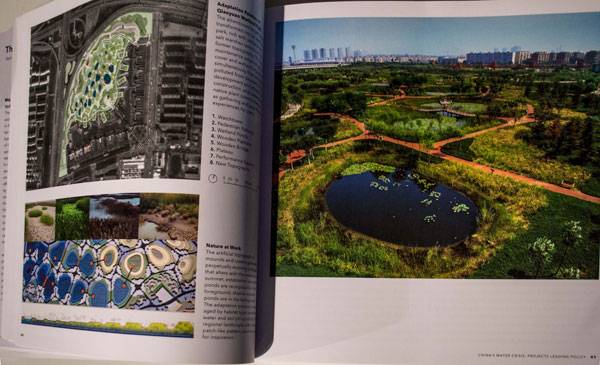
Inside Water Urbanisms East. Photo credit: Yuliya Georgieva
These practices have created a complex natural cycle of water, crops, and biodiversity which is “
the oldest known biodiverse agrarian system in existence”, which is now threatened by the millions of tourists visiting it, despite its status as a UNESCO world heritage site.
Pick up your copy HERE! 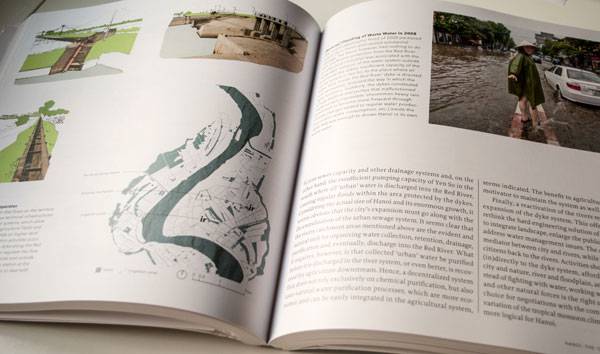
Inside Water Urbanisms East. Photo credit: Yuliya Georgieva
The final chapter,
“Explorations and Speculations”, focuses on the design aspect of hydrologic urbanisms. A research-based design is presented as a tool to generate new approaches to integrating water, nature, and urbanized areas into a single system. With its array of short contributions, this chapter allows the exchange of ideas and solutions specifically designed for a particular context while at the same time going after the same concept as the rest of the book – looking for a new paradigm of living and designing for integrated water urbanity.
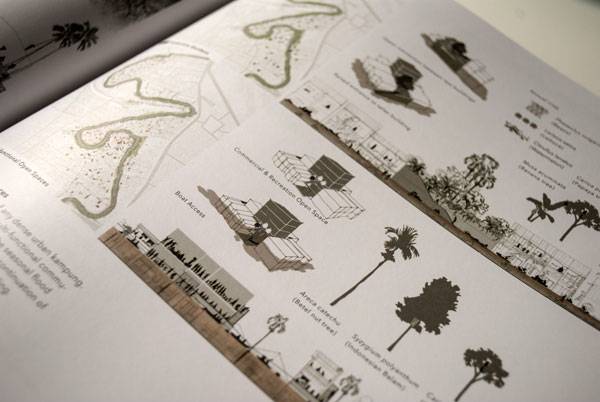
Inside Water Urbanisms East. Photo credit: Yuliya Georgieva
Each case study is richly illustrated with maps, sections, diagrams, and images so you can dive into exploring the complexity of water systems from the scale of the plumbing circulation of an apartment building up to the multiform structure of a river delta like the Mekong. Each case study has something to offer whether you are a planning professional or simply curious to understand the various relationships of Asian populations to water and how they evolved, historically.
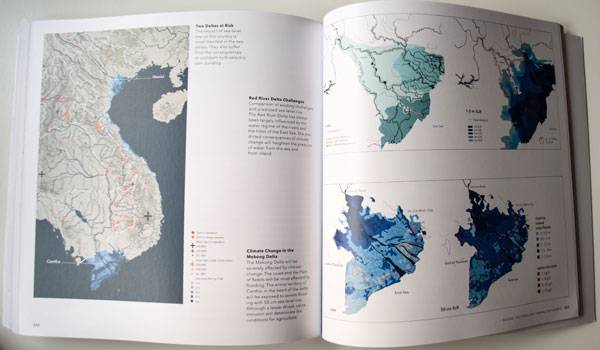
Inside Water Urbanisms East. Photo credit: Yuliya Georgieva
From China through Vietnam, Indonesia, Thailand, Bangladesh, Japan, Iran, and Taiwan, you will be surprised at the diversity of water management practices that have existed and developed over time. In the context of the global climate change discussion, this book will bring you insight into the importance of integrated water practices interplayed with urban planning, governmental policies, and design, explored over a variety of scales. This rich dictionary of ideas and practices left me inspired and willing to seek to reintegrate these water practices in a new search for strategies for climate adaptation and design. It is without a doubt a “must-have” in your library!
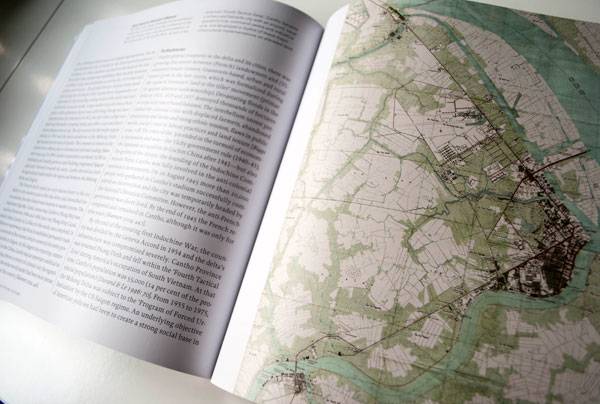
Inside Water Urbanisms East. Photo credit: Yuliya Georgieva
Book review by Yuliya Georgieva Return to Homepage
Published in Blog











